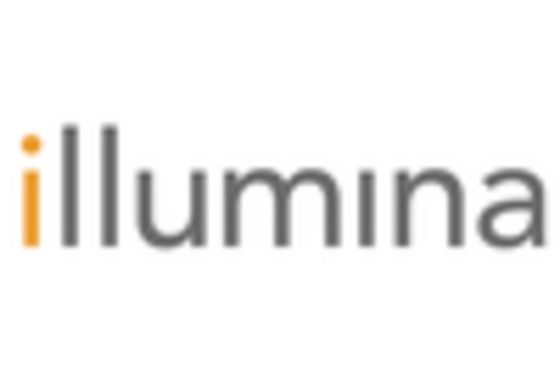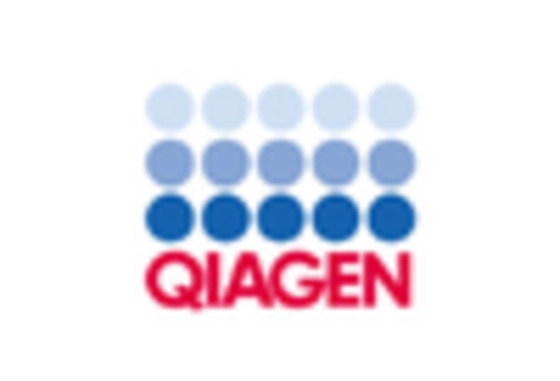Advancements in Computational Biology
Advancements in computational biology are significantly influencing the Bioinformatics Market Industry. The development of sophisticated algorithms and software tools enables researchers to analyze complex biological data more efficiently. For instance, machine learning techniques are increasingly applied to predict protein structures and interactions, which is crucial for drug discovery. The computational biology segment is expected to witness substantial growth, with estimates suggesting it could account for over 40% of the overall bioinformatics market by 2025. This trend underscores the importance of computational methods in managing and interpreting vast datasets, thereby propelling the Bioinformatics Market Industry forward.
Increased Investment in Biotechnology
Increased investment in biotechnology is a major catalyst for the Bioinformatics Market Industry. Governments and private entities are channeling substantial funds into biotechnological research and development, recognizing its potential to revolutionize healthcare. In 2025, investments in biotechnology are anticipated to exceed 200 billion USD, with a significant portion allocated to bioinformatics solutions. This influx of capital fosters innovation and the development of new bioinformatics tools, which are essential for analyzing biological data. As a result, the Bioinformatics Market Industry is likely to experience accelerated growth, driven by the demand for advanced analytical capabilities in biotechnology.
Rising Demand for Genomic Data Analysis
The increasing demand for genomic data analysis is a pivotal driver in the Bioinformatics Market Industry. As healthcare systems evolve, the need for precise genomic information to tailor treatments is paramount. The market for genomic data analysis is projected to reach approximately 30 billion USD by 2026, reflecting a compound annual growth rate of around 10%. This surge is largely attributed to advancements in sequencing technologies and the growing prevalence of genetic disorders. Consequently, bioinformatics tools that facilitate the analysis and interpretation of genomic data are becoming indispensable. The integration of these tools into clinical workflows enhances the ability to deliver personalized medicine, thereby driving the growth of the Bioinformatics Market Industry.
Growing Adoption of Cloud-Based Solutions
The growing adoption of cloud-based solutions is transforming the Bioinformatics Market Industry. Cloud computing offers scalable resources and cost-effective data storage, which are essential for managing the large volumes of data generated in bioinformatics research. By 2025, it is estimated that cloud-based bioinformatics solutions will account for nearly 25% of the market share. This shift allows researchers to collaborate more effectively and access powerful computational resources without the need for extensive local infrastructure. Consequently, the Bioinformatics Market Industry is poised for growth as organizations increasingly leverage cloud technologies to enhance their research capabilities.
Regulatory Support for Bioinformatics Innovations
Regulatory support for bioinformatics innovations plays a crucial role in shaping the Bioinformatics Market Industry. Governments are recognizing the importance of bioinformatics in advancing healthcare and are implementing policies that encourage research and development. For instance, regulatory frameworks that facilitate the approval of bioinformatics tools and applications are being established. This supportive environment is likely to stimulate innovation and attract investments, thereby fostering growth in the Bioinformatics Market Industry. As regulatory bodies continue to adapt to the rapid advancements in technology, the market is expected to expand, driven by the increasing acceptance of bioinformatics solutions in clinical and research settings.

















Leave a Comment